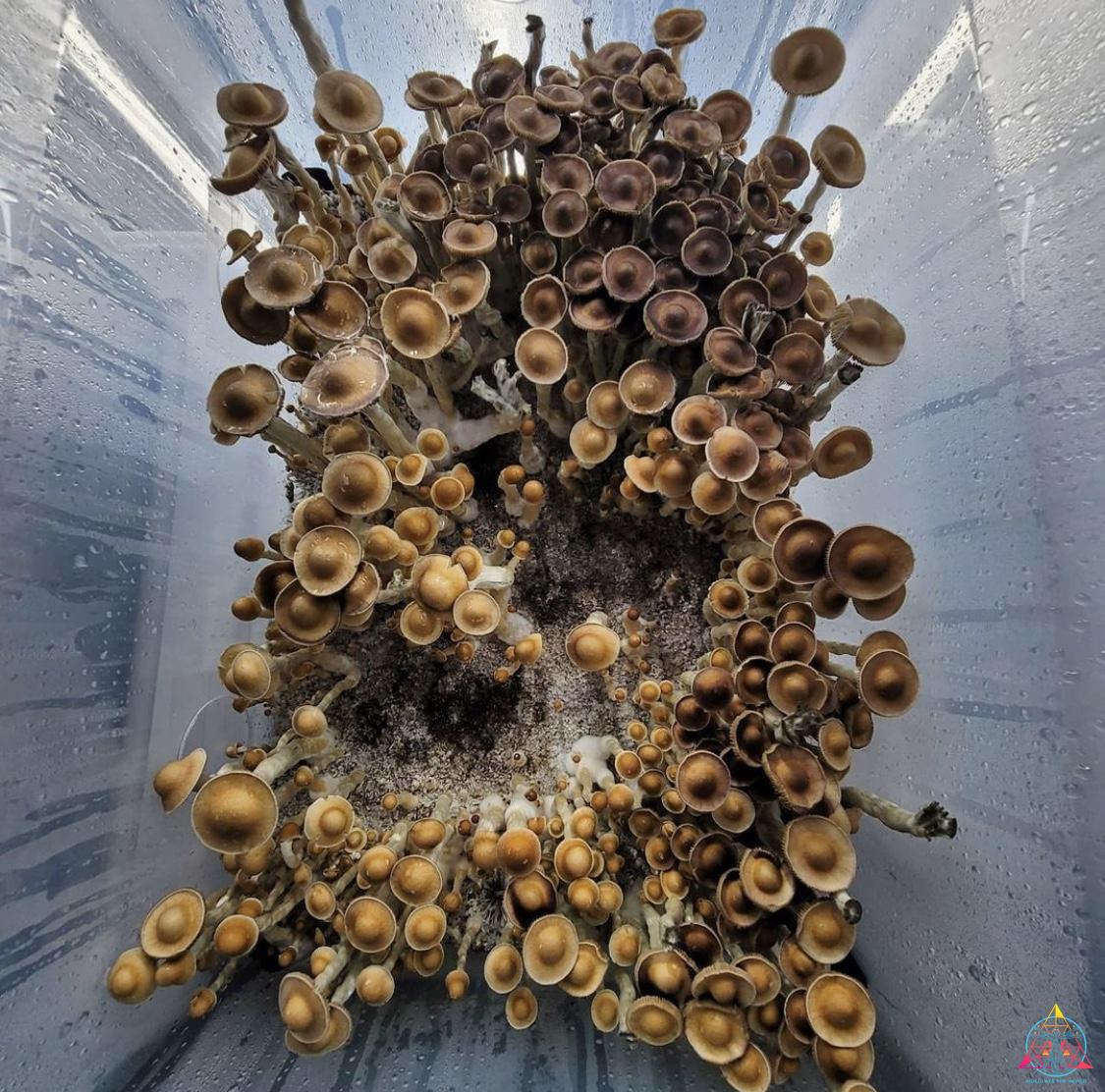Spore Print vs Spore Swab vs Spore Syringe
When working with mushroom spores and mycelium, there are many different ways in which they can be used and stored safely. In this brief article we go over the differences between three of these storage methods.

Spore Print Photo by: Drew C
What is a spore print?
Spore prints are the product of placing gills of a mushroom onto a flat clean surface such as tin foil, paper, mylar, glass, and plastic dishes. The options are nearly endless, however, some mediums make for easier removal of the spores than others. In this condition, spores can last decades if stored in an airtight container kept in a cool dark place.
Spores prints will vary in size, shape, and color. The size of a print depends on the size of the mushroom cap that drops spores. Certain species with small caps leave small spore prints, while others with large caps will leave large spore prints. The size of a spore print is not usually something to be concerned about since a spore print as small as a dime contains millions of individual spores. In fact, spore prints contain so many mushroom spores that they can typically make anywhere from 5 to 100 10ml spore syringes!
The mushroom species is also a factor that determines the color of a spore print. The color of the print depends on the color of the spores and the amount of spores dropped. Different types of mushrooms have different color spores; ranging from white, to rust, to dark purple or black. Some species of mushrooms produce lighter spore prints because they do not drop as many spores. While other species of mushrooms drop heavy loads of spores resulting in a thick print that makes the spore color appear darker.
For microscopic viewing of spores from a spore print, simply use a tool to transfer the spores to a glass slide where they can be easily viewed under a microscope.

Spore Syringes Photo By: Drew C
What is a spore syringe?
A spore syringe is a sterile syringe filled with spores suspended in liquid. Syringes are typically the most common method for transporting spores because of their ease of application. As with spore prints, spore syringes will vary in spore density and coloration dependent upon the mushroom species. In this condition, spores can last many years when stored in an airtight container and kept in a cool dark place.
A spore syringe can be made by scraping some spores off a spore print into a sterile container of distilled water and mixing thoroughly. Once the spores are evenly dispersed in the distilled water, simply pull the mixed solution into a syringe. Here at Inoculate The World, we fill our spore syringes to 10cc. It is recommended to make spore syringes in a sterile environment; ideally in front of a laminar flow hood.
To use a spore syringe for microscopy, you will want to vigorously shake the syringe to distribute spores throughout the solution. Next you will place a drop of the solution onto a glass slide, and place a cover-slip on top. Now place the slide on your microscope stage and explore your spores. Take photos, measure spore size, and most of all – have fun with your spores!

Live mycelium in a Liquid Culture Syringe. Photo by: TBG
What is a liquid culture?
A Liquid Culture (LC) is a sterile syringe filled with live mushroom mycelium in a liquid state. Spores are different from liquid cultures in that spores are reproductive cells of a mushroom whereas LC’s contain the next life cycle stage of the mushroom; mycelium.
Liquid culture is obtained by taking a germinated agar plate, and blending the contents into a sterile nutritive liquid solution. After allowing it to brew in its new ‘liquid home’, the liquid inoculant can be pulled into a sterile syringe. Here at Inoculate The World, we fill our liquid culture syringes to 12cc.
Liquid cultures are beneficial when growing gourmet mushroom species because they typically have quicker colonization times than starting from spore.

Live mycelium growing in a jar of potato dextrose (LC). Photo by: TipOfTheCapMushrooms
What’s your best option?
The one that most suits your needs. When buying from a reputable vendor like InoculateTheWorld.Com, you can be confident that whichever medium you choose to use will perform to your expectations. Spore syringes are certainly the most common medium for users. Spore prints are great for making syringes, and viewing spores under a microscope. Experiment and find what works best for you! Thanks for reading and be sure to let us know if you enjoyed this article by leaving a comment below.
-InoculateTheWorld
Related Articles
Forage to Feast: Exploring the Biology and Culinary Magic of Morel Mushrooms
It’s a mild spring day, with the warm sun casting flecks of light on the forest floor. Deciduous tree branches tangle together overhead and close in around a grassy depression, likely the remnant of a past disruption or abandoned pathway. The mushroom forager...
The Mushroom of Immortality: Learn About Medicinal Reishi Mushrooms
Reishi, along with the entire Ganoderma Genus, is prized for its health benefits, and is among the most unique-looking fungi in our collection. In this article, we’ll discuss some of the health benefits of Reishi mushrooms and Ganoderma as a whole. We’ll also discuss...
Washington’s New Psilocybin Therapy Bill & The Future of Legal Mushrooms
At the beginning of this year, Senator Jesse Salomon along with thirteen co-sponsors, filed Senate Bill 5201. This bill would allow for psilocybin-assisted therapy in Washington State. If passed, it would structure regulations for licensed therapeutic programs using...











